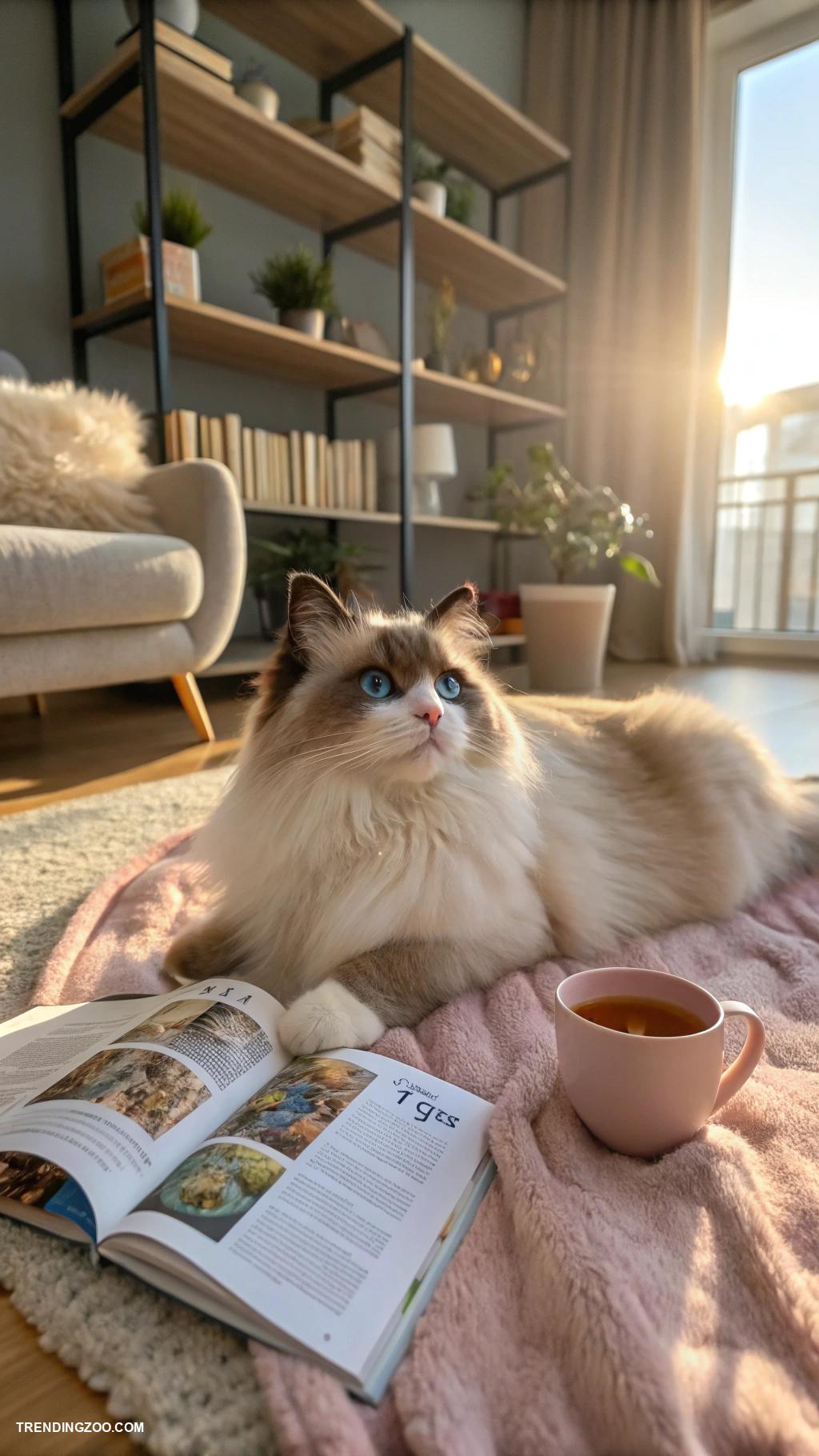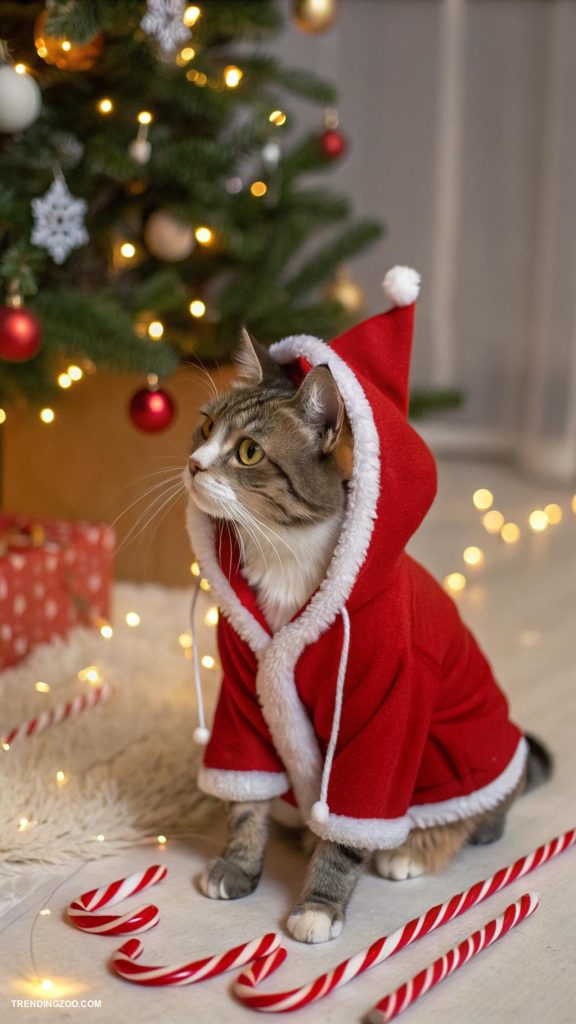Soft, silky coats, gentle purrs, and an affectionate nature that’s simply irresistible – it’s no wonder the Ragdoll cat breed has captured the hearts of many feline enthusiasts. Originating in the 1960s, these majestic cats were deliberately bred to be large, docile, and eager to please, earning them their iconic name.
With their striking blue eyes and laid-back demeanor, Ragdolls are often described as “puppy-like” in their behavior, as they love to follow their humans around the house, snuggle up in their laps, and even enjoy being dressed up in costumes.
But beyond their charming personality, Ragdolls are also known for their impressive size, with males weighing up to 20 pounds, making them a striking addition to any home. In this article, we’ll delve into the world of Ragdolls, exploring their history, characteristics, and what makes them such beloved companions.
Origin and History of the Ragdoll Cat
The Ragdoll cat breed has a fascinating origin story that dates back to the 1960s in California, USA. The breed was created by breeding Persian and Birman cats with a focus on producing a large, muscular cat with a soft, silky coat and a docile temperament.
The first Ragdolls were the result of a chance breeding between a non-pedigreed white cat named Josephine and a seal-pointed Birman cat named Daddy Warbucks. The kittens from this union inherited their mother’s large size, soft coat, and affectionate nature, which quickly made them popular among cat fanciers.
The breed was officially recognized by the International Cat Association (TICA) in 1985 and later by the Cat Fanciers’ Association (CFA) in 1991. Today, the Ragdoll is one of the most beloved and sought-after cat breeds around the world, prized for its stunning appearance, gentle disposition, and tendency to follow its owners around the house, earning it its signature name.
Despite its relatively short history, the Ragdoll has already made a significant impact on the world of feline fancy and continues to captivate cat enthusiasts with its unique charm and loving personality.
Physical Characteristics and Appearance
The ragdoll cat breed is known for their striking physical characteristics and appearance. They are a medium to large-sized breed, with males typically weighing between 12 and 20 pounds and females weighing between 8 and 15 pounds. Their bodies are muscular and athletic, with a broad chest and strong legs.
Their coats are soft and silky, with a unique texture that is often described as “velvety” or “mohair-like”. The coat color and pattern can vary greatly, with ragdolls coming in a range of colors including seal, blue, chocolate, lilac, and red, as well as pointed, mitted, and bi-color patterns.
One of the most distinctive features of the ragdoll breed is their lack of undercoat, which makes their fur feel surprisingly light and smooth to the touch. Their faces are typically heart-shaped, with a flat forehead, a short, broad muzzle, and large, wide-set eyes that are often described as “butterfly-shaped” due to their rounded tips.
Overall, the ragdoll breed is known for their stunning appearance, with their unique coat texture and striking coloration making them a popular choice among cat enthusiasts.
Temperament and Behavior Traits
Ragdoll cats are renowned for their unique temperament, which sets them apart from other breeds. They are often described as laid-back, easy-going, and affectionate, making them a perfect fit for families with children or for those who want a low-maintenance pet.
Ragdolls are known to be very social and love human interaction, often following their owners around the house and demanding attention by kneading on their laps or cuddling against them. They are also relatively quiet, with a soft and melodious purr that is a delight to listen to.
In terms of behavior, Ragdolls are generally calm and gentle, but they can be prone to mischief if they don’t receive enough stimulation or exercise. They love to play and can be quite playful, especially in their kittenhood, but as they mature, they tend to mellow out and become more sedentary.
Despite their playful nature, Ragdolls are not naturally inclined to scratch or destroy furniture, making them a great choice for those who value a tidy home. Overall, Ragdolls are a delightful breed that thrives on human attention and affection, and their unique temperament and behavior traits make them a joy to live with.
Care and Maintenance of Ragdoll Cats
As a beloved and popular breed, Ragdoll cats require a specific care and maintenance routine to ensure their overall health, happiness, and well-being. One of the most important aspects of Ragdoll care is grooming. These cats have a medium-length coat that is soft and silky to the touch, but it requires regular brushing to prevent matting and tangling.
A gentle brush or comb should be used to remove loose hair and distribute skin oils, promoting healthy skin and a lustrous coat. Ragdolls are prone to shedding, especially during seasonal changes, so regular brushing will help reduce the amount of loose hair around the house. Another crucial aspect of Ragdoll care is nail trimming.
Their nails grow rapidly, and long nails can cause discomfort and health issues if left untrimmed. It’s essential to trim their nails every few weeks to prevent overgrowth. Ragdolls are also known for their love of water, and as such, they require regular bathing.
However, it’s crucial to use a gentle shampoo specifically formulated for cats, and to avoid getting water in their ears, eyes, or nose. Furthermore, Ragdolls are sensitive to temperature extremes, so it’s essential to provide a comfortable and stable environment with a consistent temperature range. Regular veterinary check-ups are
Health Issues and Lifespan
Ragdoll cats are known for their affectionate and docile nature, but like all living beings, they are not immune to health issues. While they are generally a healthy breed, Ragdolls are prone to certain health problems that can affect their quality of life and lifespan.
One of the most common issues is hypertrophic cardiomyopathy, a heart condition that can lead to heart failure. Responsible breeding practices have helped to reduce the incidence of this condition, but it is still important for potential owners to work with a reputable breeder who has had the cats’ hearts checked. Ragdolls are also prone to hip dysplasia, a genetic condition that can cause arthritis and mobility issues.
Regular exercise and a healthy diet can help to manage this condition, and some breeders are now working to breed cats with a lower incidence of hip dysplasia.
On average, Ragdolls live between 12 and 17 years, with some individuals living into their early 20s. Factors such as diet, exercise, and genetics all play a role in determining an individual cat’s lifespan, and with proper care and attention, many Ragdolls can live long and healthy lives.
Training and Socialization Tips
Ragdoll cats are known for their gentle and affectionate nature, but like any other breed, they require proper training and socialization to ensure they grow into well-adjusted and well-behaved pets. From an early age, it’s essential to expose your Ragdoll kitten to a variety of sights, sounds, and experiences to help them develop good habits and a confident personality.
Start by introducing your kitten to different textures, smells, and surfaces, such as scratching posts, catnip, and soft blankets. This will help them become comfortable with new stimuli and reduce the likelihood of fear-based behaviors later on. Socialization is also crucial, and you can achieve this by gradually introducing your kitten to new people, other pets, and environments.
Begin with short introductions and monitor your kitten’s reactions, rewarding calm behavior and providing a safe space if they become overwhelmed. As your Ragdoll grows, continue to reinforce good behavior with positive reinforcement techniques, such as treats and praise, and avoid punishing or scolding, which can lead to anxiety and fear.
With patience, consistency, and love, your Ragdoll cat will become a loving and loyal companion, and with proper training and socialization, they’ll thrive in their new home.
Choosing a Ragdoll Cat: Adoption vs. Breeder
When considering bringing a Ragdoll cat into your family, one of the first decisions you’ll need to make is whether to adopt from a shelter or rescue organization or purchase from a reputable breeder. Both options have their pros and cons, and it’s essential to weigh these factors carefully before making a decision.
Adopting a Ragdoll cat from a shelter or rescue organization can be a highly rewarding experience, as you’ll be giving a loving home to a cat that may have otherwise been overlooked or neglected. Many shelters and rescue organizations will have already had the cat spayed or neutered, microchipped, and vaccinated, which can save you money and hassle in the long run.
However, you may not know the cat’s exact ancestry or genetic makeup, and some shelters may not provide the same level of socialization and handling as a breeder.
On the other hand, purchasing a Ragdoll cat from a reputable breeder can ensure that you’re getting a cat with a known ancestry and genetic makeup, as well as one that has been socialized and handled extensively. Breeders often also provide health guarantees and may offer additional services such as lifetime support and advice.
However, be prepared for a higher upfront cost, as well as the potential for higher ongoing expenses.







